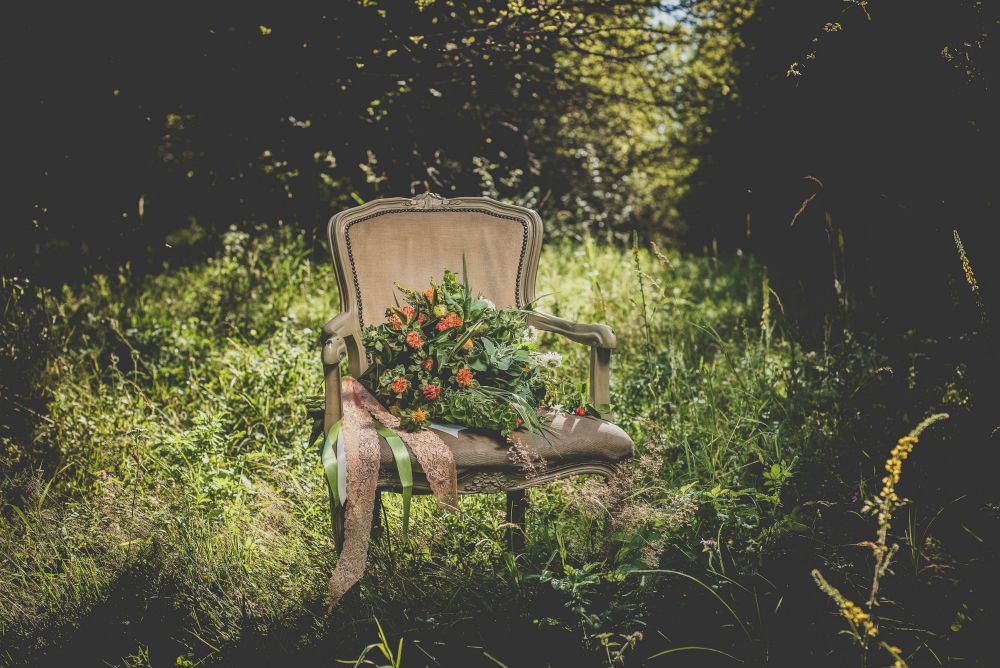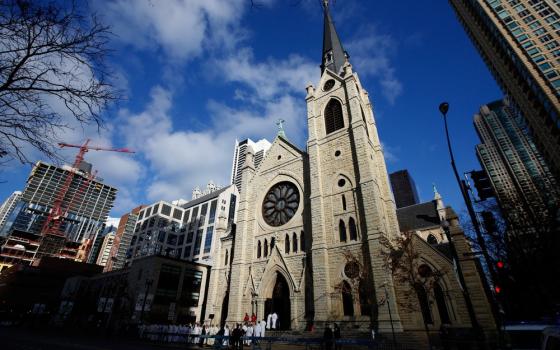
(Unsplash/Artsy Vibes)
I met dear Peter Mazar, of blessed memory, when I was writing for Liturgy Training Publications. Gabe Huck was our editor then, and part of the fun of visiting the Chicago headquarters was the chance to visit both Gabe and Peter's offices on the same day; the contrast between spaces was stark. Peter had a window air conditioner he ran on high all through the summer while Gabe sweated and saved the planet. During Easter, Gabe's office was likely to feature a solemn icon of the risen Christ, while Peter's was filled with the 50 days' worth of candy he bought at a steep discount every Easter Monday and brought in to share. (He pitied the poor Walgreen's manager who mistakenly thought the season had ended.) Up the cracks in his office wall, Peter taped bright paper Easter flowers. Both of them could make a compelling argument for mystagogia: Gabe through art, Peter through hot pink Peeps.
It was Peter, the son of Hungarian immigrants, who told me of his family's old country custom of leaving an empty chair at the Christmas table for the beloved dead. In one of his last Christmas letters (and if you think his office was gaudy during Easter you should have seen his home during Christmas) he wrote, "The chair grows more crowded every year."
The chair grows more crowded every year.
Now we've come to November, when the church asks us to remember them all, those who crowd the empty chairs of our homes and our hearts. It is a gift we should not refuse. Bring out the pictures. Re-read the letters. Tell the stories. Visit the graves. Reach out and grasp the cords that bind and anchor and sometimes entangle us.
A couple of years ago, I kept the Feast of All Saints in Nazareth, Texas. Holy Family Church there, where each pew is equipped with brass clips for the men's Stetson hats, is home of what the pastor, Fr. Ken Keller, believes is the only country western Mass anywhere. He can make a compelling argument for mystagogia in the twang of a steel guitar.
Keller invites the parishioners each November to bring pictures of their beloved dead. The pictures of the dead are placed on and around the baptismal font. It is a visible reminder of their first and final belonging. It is a reminder of the first and final belonging of all of us, those we can see and touch and those hidden from our sight and embrace. It is in those waters we all were born. And it is at those waters that the church prays for the newly baptized:
May they keep the flame of faith alive in their hearts. When the Lord comes, may they go out to meet him with all the saints in the heavenly kingdom.
It is beside those waters that we recall the glad truth that we will see them again, "when the Lord comes." It is beside those waters that we recall Paul's comforting words to the Thessalonians and to us, that we grieve, yes, but that we "may not grieve as others do who have no hope."
After my mother died, I kept her last pair of black leather gloves. They are small and stretched out of shape, the leather worn white in their deep creases and still bearing the indentations of her gnarled and knotted fingers. In the last years of her life, my mother's hands, once always warm, were always cold. When we went out, I helped her on with her coat and then her gloves. I would take her hand. I remember the feel of the leather as she wrapped her fingers around mine. She held my hand tight, like a child, wanting to be led, wanting to be shielded, wanting to be safe. Sometimes when I pull on those gloves I think I can still feel her hand in mine.
Advertisement
It is autumn in the foothills of the Rockies, so I take the gloves out of my closet and put them on. I pull the gloves over my wedding ring, which my maternal grandmother first put on 1906. She died at the age of 93, just days before my wedding. My mother took the ring from her hand and gave it to me. It will, I hope, go from my hand to a granddaughter's, one ring in a chain reaching from woman to woman.
The grandmother whose ring I wear had five children, just like me. One of them, the boy she called, "little Tom Cullen," died when he was a toddler. They were living on the ranch, far from town, far from the doctor, far from help. My grandmother told us how she stood by his crib and "watched the angels come and take him away." Even I, born nearly half a century after little Tom Cullen died, knew he was one of those who crowded the chair at my grandparents' table.
It is a poverty when we don't live in the mix: the elderly with the babies, the just-starting-out watching and speaking and listening to and learning from and teaching those near the finish line. It is also a poverty to live only among the living, cut off from the stories and memories and wisdom and folly of the dead. We need tables, big tables and lots of chairs.
[Melissa Musick Nussbaum's latest book, with co-author Anna Keating, is The Catholic Catalogue: A Field Guide to the Daily Acts That Make Up a Catholic Life.]
Editor's note: We can send you an email alert every time this column, My Table Is Spread, is posted. Go to this page and follow directions: Email alert signup.







